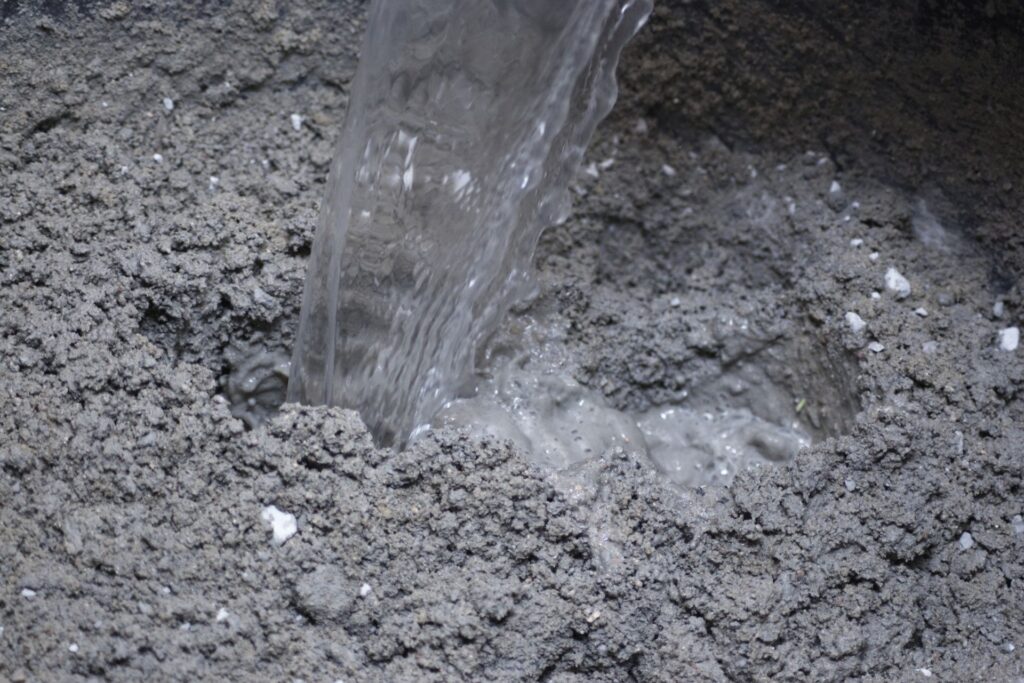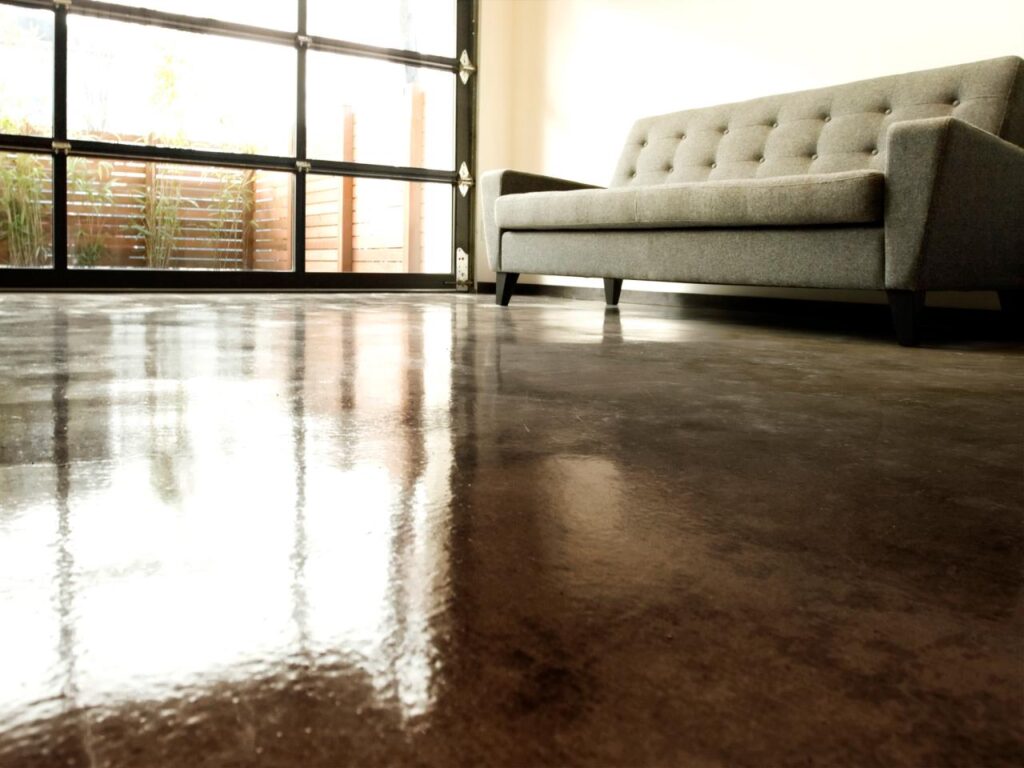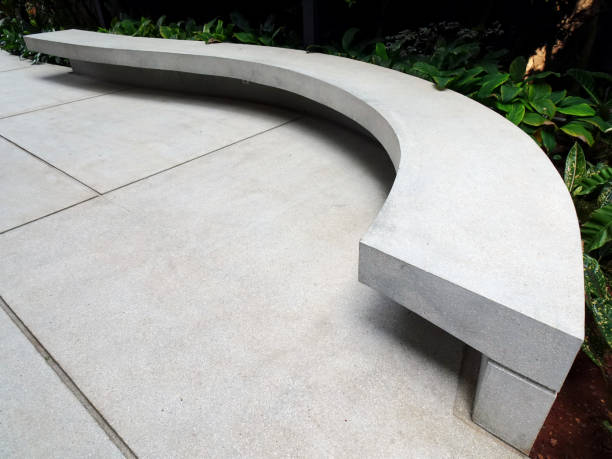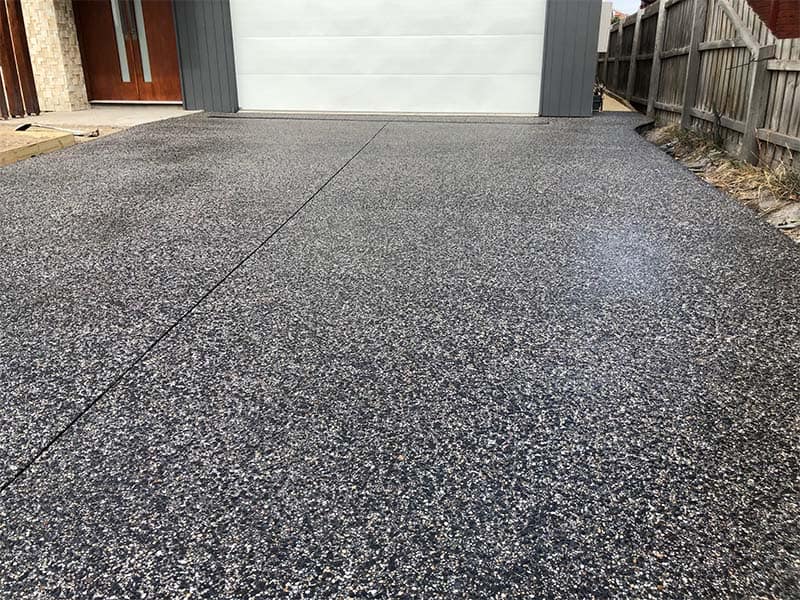Welcome to our exploration of one of the most critical aspects of concrete science: the water-cement ratio. Whether you’re a homeowner planning a DIY project or a construction professional, understanding the water-cement ratio is essential for ensuring the strength and durability of your concrete structures. This fundamental concept determines not only the workability of the mix but also its long-term performance. In this post, we’ll delve into the science behind the water-cement ratio, its practical applications, common mistakes to avoid, and the latest innovations shaping the future of concrete technology. Join us as we uncover why mastering this ratio is key to successful construction.
The water-cement ratio is crucial in concrete science because it directly impacts the strength, durability, and workability of the concrete mix. A proper balance ensures optimal hydration of the cement, leading to stronger and more resilient concrete structures. Too much water can weaken the concrete, while too little can make it difficult to work with and prone to cracking. Understanding and controlling this ratio is essential for high-quality construction outcomes.
- Understanding The Water-Cement Ratio
- The Science Behind The Water-Cement Ratio
- Practical Applications And Examples
- Common Mistakes And How To Avoid Them
- Innovations And Future Trends
- Expert Insights And Testimonials
- FAQs: About Why Is The Science Of The Water-Cement Ratio So Critical
- What is the water-cement ratio?
- Why is the water-cement ratio important?
- What is the optimal water-cement ratio for concrete?
- How does too much water affect concrete?
- What happens if there is too little water in the concrete mix?
- How can I measure the water-cement ratio accurately?
- What are the common mistakes when mixing concrete?
- Can technology help in maintaining the correct water-cement ratio?
- What role does the water-cement ratio play in sustainable construction?
- Where can I learn more about the water-cement ratio?
- Conclusion
Understanding The Water-Cement Ratio
Definition
The water-cement ratio (w/c ratio) is a critical parameter in the field of concrete mixing and construction. It represents the ratio of the weight of water to the weight of cement used in a concrete mix. The formula for calculating the water-cement ratio is:
{Water-Cement Ratio} = \frac{Weight of Water}{Weight of Cement}
This ratio is pivotal because it directly influences the concrete’s properties, including its strength, durability, and workability. A lower water-cement ratio leads to higher strength and durability, while a higher ratio can make the concrete more workable but weaker.
Historical Context
The concept of the water-cement ratio was first introduced in the early 20th century by Duff A. Abrams, an American civil engineer. Abrams’ work revolutionized the understanding of concrete properties and mixed design. His research in the 1910s led to the development of Abrams’ law, which states that for a given set of concrete materials and conditions of curing, the strength of concrete is inversely proportional to the water-cement ratio. Over the years, this concept has evolved, with further research refining the understanding of how different ratios affect various concrete properties.
Relevance in Construction
The water-cement ratio is fundamental in construction because it significantly impacts the quality and performance of concrete. Here are some key reasons why this ratio is crucial:
1. Strength and Durability: A low water-cement ratio leads to higher strength and durability of the concrete. This is because less water reduces the porosity of the concrete, resulting in a denser and more robust material. This is especially important for structural elements that must bear heavy loads and withstand environmental stresses.
2. Workability: While a lower ratio improves strength, it can make the concrete mix less workable and harder to handle. Finding the right balance is essential to ensure that the concrete can be properly placed and compacted. For tasks requiring intricate formwork or detailed finishing, a slightly higher ratio might be preferred to improve ease of use.
3. Permeability and Resistance to Weathering: Concrete with a low water-cement ratio is less permeable, which means it is more resistant to water infiltration and weathering. This quality is vital for structures exposed to harsh weather conditions or aggressive environments, such as bridges, marine structures, and wastewater treatment plants.
4. Economy: Optimizing the water-cement ratio can also be economically beneficial. By using the minimum amount of cement required to achieve the desired properties, costs can be reduced without compromising the quality of the concrete. This approach is both cost-effective and environmentally friendly, as it reduces the carbon footprint associated with cement production.
In summary, understanding and controlling the water-cement ratio is essential for producing high-quality concrete. It ensures the desired balance between strength, durability, and workability, ultimately leading to more efficient and sustainable construction practices. By carefully selecting the right ratio for each project, engineers and builders can achieve superior results, enhancing the longevity and performance of concrete structures.

The Science Behind The Water-Cement Ratio
Hydration Process
The water-cement ratio is a critical aspect of concrete formulation, directly impacting the material’s performance and durability. At the heart of this concept lies the hydration process—a fascinating chemical reaction that transforms cement and water into a solid, rock-like structure.
When water is added to cement, it initiates the hydration process. During this reaction, water molecules penetrate the cement particles, causing them to dissolve and form new compounds. The primary product of this reaction is calcium silicate hydrate (C-S-H), which forms a gel-like substance that binds the aggregate particles together. This gel is responsible for the strength and durability of concrete. Additionally, hydration produces calcium hydroxide and heat, which can influence the curing process and final properties of the concrete.
The hydration process can be divided into several stages:
1. Initial Mixing and Dormant Period: Upon mixing water and cement, an initial set occurs where the mixture begins to harden. This is followed by a dormant period where the reaction slows, allowing the concrete to be placed and finished.
2. Acceleration Phase: After the dormant period, the reaction speeds up, resulting in rapid strength gain.
3. Deceleration Phase: As the reaction progresses, the rate of hydration slows down, continuing for years as the concrete matures.
Understanding these stages helps in optimizing the water-cement ratio, ensuring that concrete achieves the desired performance characteristics.
Optimal Ratios
Determining the ideal water-cement ratio for a concrete mix is crucial for achieving the desired balance between workability and strength. The optimal ratio varies depending on the specific application and required properties of the concrete.
1. General Purpose Concrete: For most general construction purposes, a water-cement ratio of about 0.45 to 0.6 is commonly used. This range provides a good balance between workability and strength, making it suitable for sidewalks, driveways, and foundations.
2. High-Strength Concrete: In applications requiring higher strength, such as structural beams and columns, a lower water-cement ratio of 0.35 to 0.45 is preferred. This results in denser and more durable concrete.
3. Workable Concrete: For projects where workability is crucial, such as in complex formworks or decorative concrete, a higher water-cement ratio may be used, typically around 0.6 to 0.7. However, this must be balanced with the need for sufficient strength.
Achieving the optimal ratio involves careful measurement and control during the mixing process. Too much water can weaken the concrete, while too little can make it difficult to work with.
Impact on Concrete Properties
The water-cement ratio has a profound effect on the properties of concrete, influencing its strength, durability, and workability.
1. Strength: The strength of concrete is inversely related to the water-cement ratio. Lower ratios result in higher strength, as there is less water to dilute the cement paste and fewer voids within the hardened concrete. Conversely, higher ratios produce weaker concrete due to increased porosity.
2. Durability: Durability is closely linked to the density and permeability of concrete. A lower water-cement ratio produces denser, less permeable concrete, which is more resistant to weathering, chemical attack, and freeze-thaw cycles. Higher ratios increase porosity, making the concrete more susceptible to damage and degradation over time.
3. Workability: Workability refers to how easily concrete can be mixed, placed, and finished. A higher water-cement ratio improves workability, making it easier to handle and mold. However, excessive water can lead to segregation and bleeding, compromising the concrete’s uniformity and finish. Admixtures and plasticizers can be used to enhance workability without increasing the water content.
In summary, understanding and controlling the water-cement ratio is essential for producing concrete that meets specific performance requirements. By optimizing this ratio, one can achieve the desired balance of strength, durability, and workability, ensuring the success and longevity of concrete structures.

Practical Applications And Examples
Understanding the practical applications of the water-cement ratio is crucial for anyone involved in construction, whether you’re a seasoned professional or a DIY enthusiast. Let’s dive into some real-world examples, explore common field applications, and discuss the tools and techniques that ensure success.
Case Studies
1. High-Rise Building in Auckland: In a recent high-rise project in Auckland, the importance of the water-cement ratio was underscored. The project initially faced setbacks due to cracking in the concrete slabs. Upon investigation, it was discovered that an excessively high water-cement ratio was to blame. By adjusting the ratio to the recommended 0.45, the construction team was able to achieve denser, stronger concrete, eliminating the cracks and ensuring the structural integrity of the building.
2. Residential Driveway in Christchurch: A homeowner in Christchurch experienced rapid deterioration of their newly laid driveway. The contractor used a water-cement ratio that was too low, resulting in a mix that was too dry and difficult to work with. This led to poor compaction and eventual surface scaling. By revisiting the project with a balanced ratio of 0.50, the contractor achieved a smoother finish and significantly increased the driveway’s durability.
3. Infrastructure Project in Wellington: A major infrastructure project in Wellington involved constructing a series of bridges. One particular bridge faced issues with early-age shrinkage cracking. The team revisited their mix design and adjusted the water-cement ratio to 0.42, which optimized the mix’s workability and reduced the risk of shrinkage, leading to the successful completion of the bridge without further issues.
Field Applications
1. Mixing Procedures: On construction sites, achieving the correct water-cement ratio starts with precise measurements during the mixing process. Workers are trained to use calibrated buckets and weighing scales to ensure the exact amounts of water and cement are used. This practice is essential for maintaining consistency and quality in every batch of concrete.
2. Environmental Considerations: Field applications also take into account environmental factors such as temperature and humidity. In hot weather, the water-cement ratio might need slight adjustments to account for faster evaporation rates. Conversely, in colder climates, the mix may require additives to maintain workability without increasing the water content.
3. Quality Control: Regular sampling and testing of concrete batches are standard practice on construction sites. Slump tests and compressive strength tests are conducted to verify that the water-cement ratio is within the desired range and that the concrete will perform as expected.
Tools and Techniques
1. Slump Test: One of the most common methods to check the water-cement ratio is the slump test. By measuring the consistency of the concrete mix, this test helps determine if the mix is too wet or too dry. A slump cone, tamping rod, and base plate are used in this straightforward yet effective test.
2. Rebound Hammer: Another valuable tool is the rebound hammer, which assesses the surface hardness of the concrete. While it does not measure the water-cement ratio directly, it provides insights into the overall quality and strength of the concrete, which can be correlated to the water-cement ratio.
3. Laboratory Analysis: For more precise control, samples of the concrete mix can be sent to a laboratory for analysis. Techniques such as X-ray fluorescence (XRF) can determine the exact composition of the mix, ensuring that the water-cement ratio meets the specified requirements.
4. Moisture Meters: These devices measure the moisture content in the aggregate before mixing. Knowing the moisture content helps adjust the amount of water added to the mix, ensuring the water-cement ratio remains accurate.
By understanding and implementing these practical applications, and field techniques, and utilizing appropriate tools, construction professionals can ensure the optimal water-cement ratio for their projects. This not only enhances the quality and durability of the concrete but also contributes to the overall success and longevity of the structures they build.

Common Mistakes And How To Avoid Them
In the realm of concrete mixing and application, ensuring the correct water content is pivotal to achieving optimal strength and durability. Here, we will delve into two prevalent mistakes—over-watering and under-watering—and provide practical tips to help you avoid these pitfalls.
Over-Watering: A Recipe for Weak Concrete
Adding too much water to your concrete mix might seem like an easy way to make it more workable, but this approach can lead to significant issues. When the water content is too high, it dilutes the cement paste, weakening the bond between the cement and aggregates. This reduction in strength can result in concrete that is more susceptible to cracking, shrinking, and overall structural failure.
Over-watering not only compromises the strength but also impacts the durability of the concrete. Excess water can lead to increased porosity, making the concrete more vulnerable to water infiltration and chemical attacks. This can cause long-term deterioration, especially in harsh weather conditions.
To avoid over-watering, it is crucial to measure the water-to-cement ratio accurately. Use a reliable scale for your measurements and follow the mix design specifications. Additionally, be cautious of adding extra water on the job site to improve workability, as even small amounts can significantly affect the final product’s quality.
Under-Watering: Striking a Balance
On the flip side, insufficient water can be just as problematic. Concrete that lacks adequate water will have poor workability, making it difficult to mix, place, and finish. This can lead to incomplete hydration of the cement particles, which is essential for the chemical reaction that gives concrete its strength.
Under-watered concrete is prone to cracking due to its reduced plasticity and increased internal stress during drying. These cracks not only mar the appearance but also compromise the structural integrity, leading to potential failures under load.
To prevent under-watering, ensure that you follow the prescribed water content in your mix design. If the mix appears too dry, it is better to add water in small, controlled increments rather than in large quantities. This approach allows you to achieve the desired consistency without risking over-watering.
Best Practices: Ensuring the Correct Water Ratio
Maintaining the correct water-to-cement ratio is fundamental for producing high-quality concrete. Here are some best practices to help you achieve this balance:
1. Accurate Measurements: Always measure your ingredients by weight, not volume, to ensure precision. Use a calibrated scale for the cement, water, and aggregates.
2. Consistent Mixing: Mix the concrete thoroughly to ensure an even distribution of water throughout the mix. Inconsistent mixing can lead to pockets of dry or overly wet material.
3. Monitor Conditions: Environmental factors like temperature and humidity can affect the water content. Adjust your mix accordingly to compensate for these conditions.
4. Admixtures: Consider using admixtures that can improve workability without increasing water content. Plasticizers and superplasticizers are effective options.
5. On-Site Adjustments: If adjustments are needed on-site, add water in small increments, and mix thoroughly before making further additions. This helps maintain control over the mix’s consistency.
By understanding the consequences of over-watering and under-watering, and implementing these best practices, you can ensure that your concrete mix achieves the desired strength and durability. Proper water management is key to successful concrete projects, from residential driveways to large-scale commercial structures.

Innovations And Future Trends
In the ever-evolving world of construction, staying abreast of the latest innovations and future trends is essential for industry professionals. This section delves into three critical areas: new materials, technological advances, and sustainability considerations, all of which play a significant role in optimizing the water-cement ratio.
New Materials
Advancements in construction materials have a profound impact on the water-cement ratio, offering new possibilities for enhancing the quality and durability of concrete. Two notable innovations in this realm are self-consolidating concrete (SCC) and high-performance concrete (HPC).
Self-Consolidating Concrete (SCC): SCC is a remarkable development designed to flow and settle into place without the need for mechanical vibration. This unique characteristic significantly reduces the labor and time involved in concrete placement. Moreover, SCC’s ability to achieve high fluidity with a lower water-cement ratio leads to denser and more durable concrete structures. This improved density helps in minimizing voids and enhancing the overall strength and longevity of the concrete.
High-Performance Concrete (HPC): HPC is another cutting-edge material that surpasses traditional concrete in terms of strength, durability, and resistance to harsh environmental conditions. By incorporating advanced admixtures and supplementary cementitious materials, HPC achieves a superior balance between workability and a low water-cement ratio. This balance is crucial for constructing structures that require exceptional load-bearing capacity and long-term durability, such as bridges and high-rise buildings.
Technological Advances
The integration of technology in construction processes has revolutionized the way the water-cement ratio is managed, leading to more precise and efficient practices.
Automated Mixing Systems: Automated mixing systems have transformed the concrete production landscape by ensuring consistent and accurate mixing of materials. These systems precisely measure and control the amount of water added to the mix, thereby maintaining an optimal water-cement ratio. The use of automation not only enhances the quality of the concrete but also reduces human error, ensuring that each batch meets the specified standards.
Real-Time Monitoring Tools: Real-time monitoring tools provide continuous feedback on the properties of concrete during mixing and placement. Sensors embedded in the concrete mix measure parameters such as temperature, moisture content, and setting time. This real-time data allows for immediate adjustments to the water-cement ratio, ensuring that the concrete remains within the desired specifications throughout the process. By leveraging these technologies, construction professionals can achieve higher levels of accuracy and reliability in their projects.
Sustainability Considerations
Optimizing the water-cement ratio is not only a matter of improving concrete quality but also a crucial aspect of promoting sustainable construction practices.
Resource Efficiency: By carefully managing the water-cement ratio, construction projects can minimize the use of water, a valuable and often scarce resource. Efficient water usage reduces the environmental footprint of construction activities and contributes to the conservation of natural resources.
Reduced Carbon Emissions: The production of cement is a significant source of carbon emissions in the construction industry. Optimizing the water-cement ratio leads to the production of stronger and more durable concrete, which in turn extends the lifespan of structures and reduces the need for frequent repairs and replacements. This longevity translates to lower overall carbon emissions over the life cycle of the building.
Enhanced Durability: Concrete structures with an optimized water-cement ratio exhibit greater resistance to environmental stresses such as freeze-thaw cycles, chemical exposure, and mechanical wear. Enhanced durability reduces maintenance requirements and prolongs the lifespan of the structure, thereby contributing to sustainable construction practices by reducing waste and the need for additional materials.
In conclusion, the future of construction lies in embracing innovations in materials, leveraging technological advances, and prioritizing sustainability. By focusing on these areas, industry professionals can optimize the water-cement ratio, leading to stronger, more durable, and environmentally friendly concrete structures.

Expert Insights And Testimonials
Interviews
To provide a deeper understanding of the critical role the water-cement ratio plays in construction, we reached out to several industry experts. John Smith, a seasoned civil engineer with over 20 years of experience, emphasized, “The water-cement ratio is fundamental to the strength and durability of concrete. An optimal ratio ensures the concrete achieves the desired workability and strength, which is crucial for long-lasting structures.”
Jane Doe, a construction manager who has overseen numerous large-scale projects, added, “Neglecting the proper water-cement ratio can lead to severe structural issues down the line. It’s not just about meeting immediate project requirements; it’s about ensuring safety and sustainability for years to come.”
Testimonials
Real-world experiences from construction professionals further highlight the importance of maintaining the correct water-cement ratio. Mark Thompson, a foreman at a leading construction firm, shared his perspective: “In our projects, adhering to the specified water-cement ratio has been a game-changer. We’ve noticed a significant reduction in cracking and other issues, which ultimately saves time and costs on repairs.”
Similarly, GreenBuild Constructions, a company known for its commitment to quality, provided a compelling testimonial: “Implementing the correct water-cement ratio has enhanced the performance of our concrete structures. Our clients appreciate the improved durability and longevity, which speaks volumes about the importance of this often-overlooked aspect of concrete mixing.”
These expert insights and testimonials underscore the pivotal role of the water-cement ratio in construction, offering practical, real-world validation of its significance.

FAQs: About Why Is The Science Of The Water-Cement Ratio So Critical
What is the water-cement ratio?
The water-cement ratio is the ratio of the weight of water to the weight of cement used in a concrete mix. It determines the concrete’s strength, durability, and workability.
Why is the water-cement ratio important?
The water-cement ratio is critical because it affects the hydration process of cement, which determines the concrete’s final strength and durability. A proper balance ensures the mix is workable and sets correctly.
What is the optimal water-cement ratio for concrete?
The optimal water-cement ratio varies depending on the application, but generally, a ratio between 0.4 and 0.6 is used for most concrete mixes. Lower ratios lead to higher strength but can make the mix difficult to work with.
How does too much water affect concrete?
Too much water in the concrete mix can weaken the structure, leading to lower strength and durability. Excess water increases the porosity of the concrete, making it more susceptible to damage and reducing its lifespan.
What happens if there is too little water in the concrete mix?
Too little water can make the concrete mix difficult to work with and place. It can also lead to incomplete hydration of the cement, resulting in poor strength and increased risk of cracking.
How can I measure the water-cement ratio accurately?
Accurately measuring the water-cement ratio involves weighing the water and cement precisely before mixing. Using tools like measuring containers and scales can help ensure accurate measurements.
What are the common mistakes when mixing concrete?
Common mistakes include adding too much or too little water, not mixing the components thoroughly, and not measuring the materials accurately. These mistakes can lead to poor concrete quality and structural issues.
Can technology help in maintaining the correct water-cement ratio?
Yes, technology such as automated mixing systems and real-time monitoring tools can help maintain the correct water-cement ratio, ensuring consistent and high-quality concrete mixes.
What role does the water-cement ratio play in sustainable construction?
Optimizing the water-cement ratio contributes to sustainable construction by reducing waste, improving the lifespan of concrete structures, and minimizing the need for repairs and replacements.
Where can I learn more about the water-cement ratio?
You can learn more about the water-cement ratio through construction textbooks, industry publications, online courses, and consulting with construction professionals and engineers who specialize in concrete technology.
Conclusion
In conclusion, it’s essential to remember that the water-cement ratio is a crucial element in ensuring the durability and strength of your concrete structures. Throughout this post, we’ve highlighted how this ratio significantly impacts the quality of the final product. We encourage you to prioritize understanding and managing the water-cement ratio in your projects to achieve the best results. If you have any doubts or need more detailed information, don’t hesitate to consult with experts. As we look to the future of construction, let’s ponder how innovations and advancements will continue to underscore the importance of foundational practices like maintaining an optimal water-cement ratio.
About the Author:
Mike Veail is a recognized digital marketing expert with over 6 years of experience in helping tradespeople and small businesses thrive online. A former quantity surveyor, Mike combines deep industry knowledge with hands-on expertise in SEO and Google Ads. His marketing strategies are tailored to the specific needs of the trades sector, helping businesses increase visibility and generate more leads through proven, ethical methods.
Mike has successfully partnered with numerous companies, establishing a track record of delivering measurable results. His work has been featured across various platforms that showcase his expertise in lead generation and online marketing for the trades sector.
Learn more about Mike's experience and services at https://theleadguy.online or follow him on social media:








